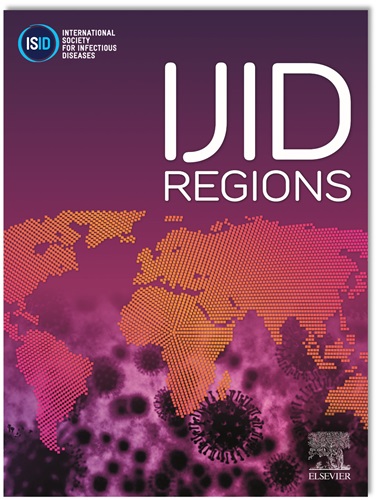Preclinical evaluation of a fully-human, quadrivalent-hantavirus polyclonal antibody derived from non-human source.
IF 4.8
2区 医学
Q1 INFECTIOUS DISEASES
引用次数: 0
Abstract
Background
Hantaviruses are rodent-borne viruses that can cause severe disease in infected humans. In the New World, major hantaviruses include Andes virus (ANDV) and Sin Nombre virus (SNV), and the disease is known as hantavirus pulmonary syndrome (HPS). In the Old World, major hantaviruses include Hantaan virus (HTNV) and Puumala virus (PUUV), and the disease is known as hemorrhagic fever with renal syndrome (HFRS). Previously, transchromsomic bovines (TcBs) were used and engineered to produce fully human antibodies to produce anti-HPS human polyclonal neutralizing antibody (SAB-400) that protected Syrian hamsters against lethal disease caused by ANDV and SNV; and anti-HFRS human polyclonal neutralizing antibody, SAB-159 and SAB-159P, that protected hamsters against infection with HTNV and PUUV, respectively.
Methods & Materials
Here, the same approach was used to produce a candidate cGMP product (SAB-163) targeting both HFRS and HPS. Two TcB animals were produced and qualified for cGMP antibody manufacturing. One animal was vaccinated with a lipid nanoparticle (LNP)-formulated ANDV and a SNV M gene-based DNA vaccine and a second animal was vaccinated with LNP-formulated HTNV and PUUV DNA vaccine. The hantavirus M gene encodes the viral envelop glycoproteins. The resultant fully-human, polyclonal antibody purified from the combined plasma from the two TcBs was designated SAB-163.
Results
SAB-163 has potent neutralizing antibodies (PRNT50 >200,000) against the four targeted hantaviruses, and cross-neutralization against several other heterotypic hantaviruses, albeit with lower titers. SAB-163 was tested for safety in a GLP toxicity study in rabbits and human tissue binding study and was found to be safe. SAB-163 was tested for efficacy in Syrian hamsters. At a dosage of 10 mg/kg, SAB-163 is bioavailable in hamsters out to 70 days post-treatment with a half-life of 10-15 days. At this same dosage, SAB-163 administered 1 day or out 5 days after exposure protected all hamsters from lethal disease caused by ANDV. At a higher dose, partial protection was achieved as late as day 6 in the ANDV model. SAB-163 also protected hamsters in the HTNV, PUUV, and SNV infection models when administered 1 day before or up to 3 days after challenge.
Conclusion
The candidate product is attractive because it is fully-human, polyclonal, safe and effective in animal models, and was produced from plasma collected within ∼100 days without the use of blood products from HFRS or HPS patients. Essentially, the virus sequence information was transformed into a candidate human polyclonal antibody product capable of protecting against prototype hantaviruses from Asia, Europe, and the Americas.
从非人类来源提取的全人类四价汉坦病毒多克隆抗体的临床前评估。
本文章由计算机程序翻译,如有差异,请以英文原文为准。
求助全文
约1分钟内获得全文
求助全文
来源期刊
CiteScore
18.90
自引率
2.40%
发文量
1020
审稿时长
30 days
期刊介绍:
International Journal of Infectious Diseases (IJID)
Publisher: International Society for Infectious Diseases
Publication Frequency: Monthly
Type: Peer-reviewed, Open Access
Scope:
Publishes original clinical and laboratory-based research.
Reports clinical trials, reviews, and some case reports.
Focuses on epidemiology, clinical diagnosis, treatment, and control of infectious diseases.
Emphasizes diseases common in under-resourced countries.

 求助内容:
求助内容: 应助结果提醒方式:
应助结果提醒方式:


